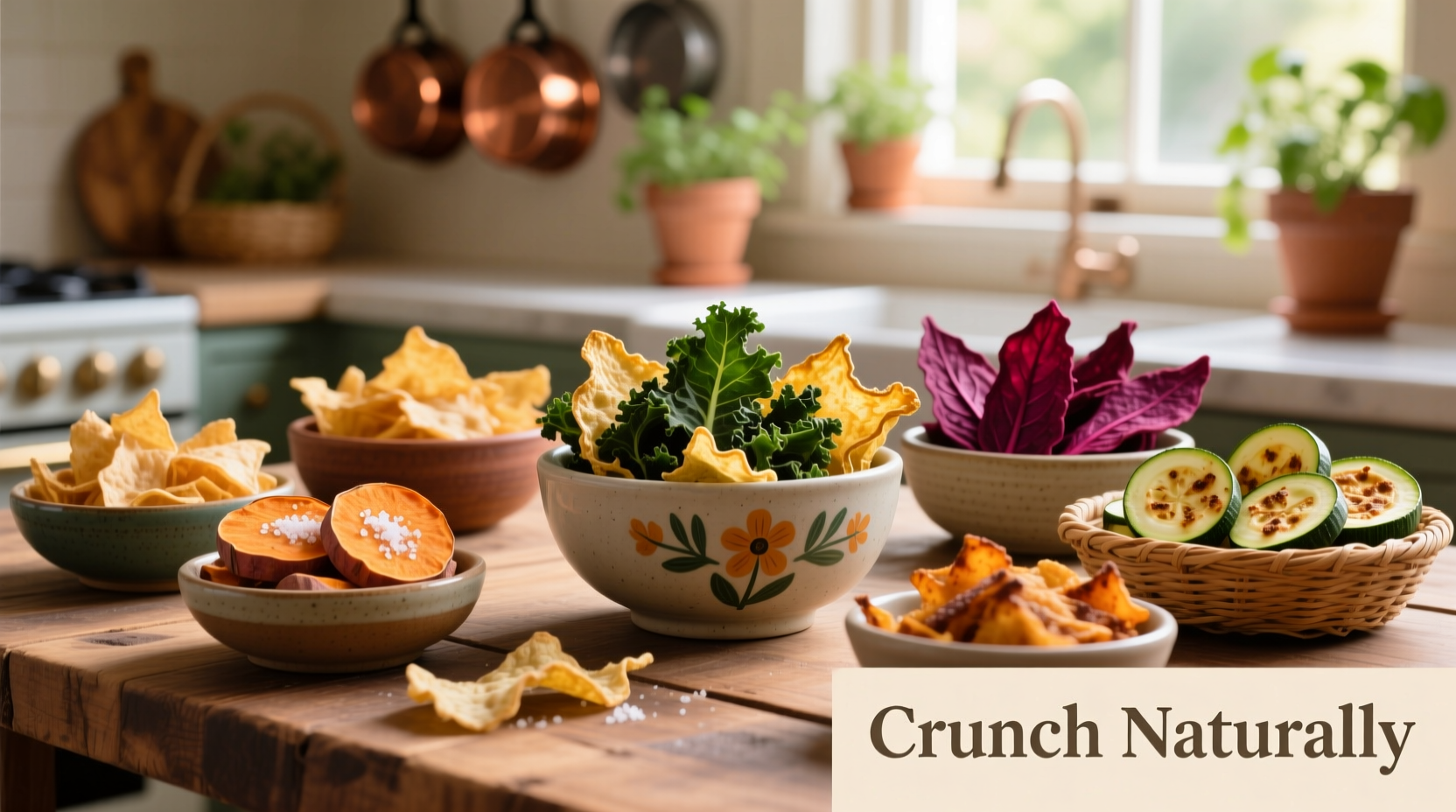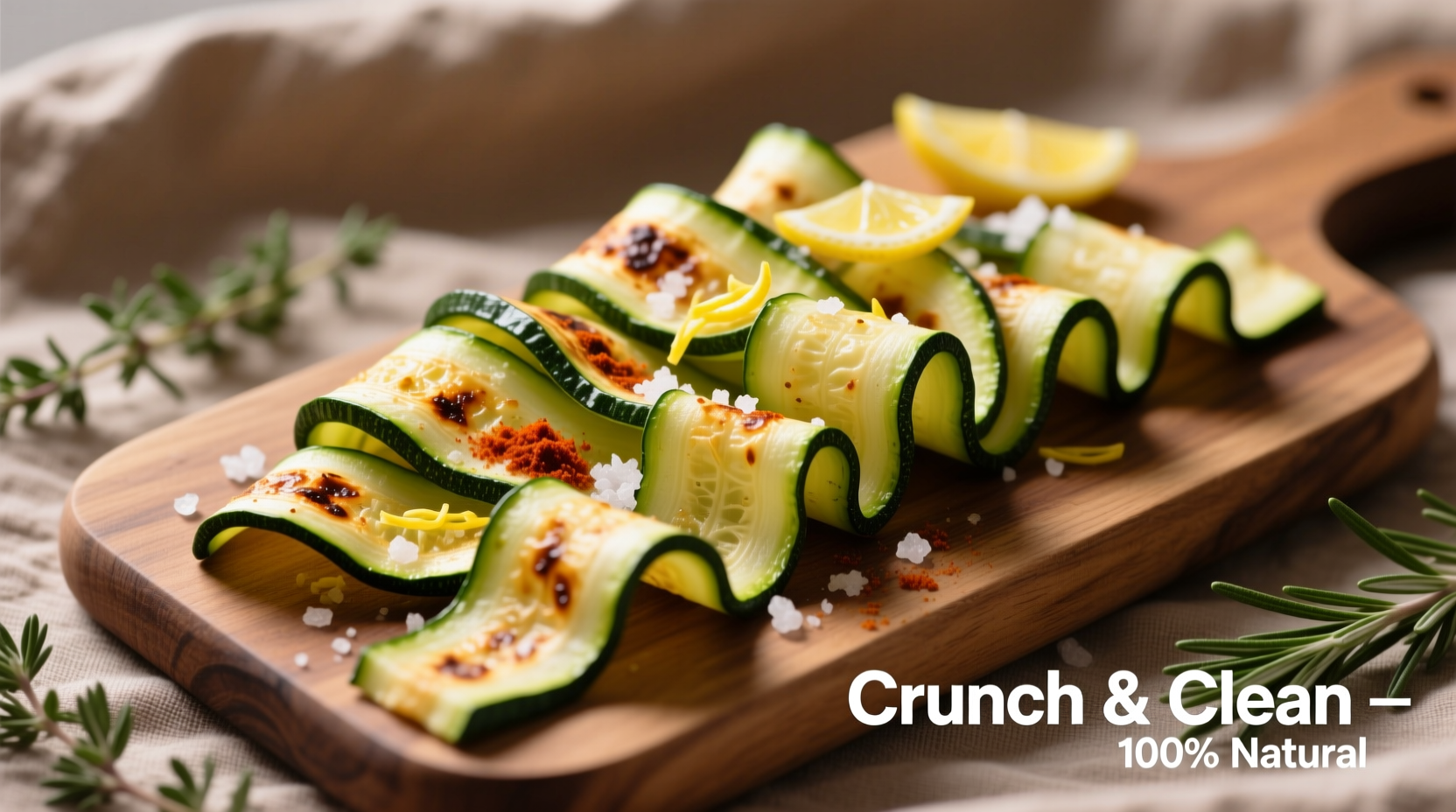Based on comprehensive nutritional analysis and culinary research, the most satisfying healthy alternatives to potato chips include baked vegetable chips (kale, sweet potato, beetroot), roasted chickpeas, and air-popped popcorn seasoned with nutritional yeast. These options provide 30-50% fewer calories, higher fiber content, and essential nutrients while delivering comparable crunch and flavor satisfaction.
Craving that satisfying crunch but tired of the empty calories and excessive sodium in traditional potato chips? You're not alone. Over 68% of American adults actively seek healthier snack alternatives according to CDC nutrition surveys, yet many struggle to find options that genuinely satisfy. The good news is that with today's culinary innovations and rediscovered traditional techniques, you can enjoy snacks that deliver both nutrition and that irresistible crunch factor.
Why Traditional Potato Chips Fall Short
While undeniably tasty, conventional potato chips present several nutritional challenges. A standard 1-ounce serving (about 15 chips) typically contains 150-160 calories, 10 grams of fat, and a staggering 150-170mg of sodium. More concerning is the processing method—deep frying at high temperatures creates acrylamide, a potential carcinogen formed when starchy foods are cooked at high temperatures, as documented by the FDA's research on food safety.
| Snack Type | Calories (per oz) | Fiber (g) | Sodium (mg) | Key Nutrients |
|---|---|---|---|---|
| Regular Potato Chips | 152 | 1.0 | 170 | Minimal vitamins |
| Kale Chips | 50 | 2.5 | 35 | Vitamins A, C, K, calcium |
| Roasted Chickpeas | 120 | 5.0 | 45 | Protein, iron, folate |
| Seaweed Snacks | 30 | 1.0 | 70 | Iodine, magnesium, omega-3s |
The Science of Satisfying Crunch: What Makes a Good Alternative
Creating genuinely satisfying alternatives requires understanding what makes potato chips so addictive. Food scientists identify three key factors: texture (the perfect crunch-to-melt ratio), flavor delivery (salt and fat distribution), and mouthfeel. The most successful alternatives address all three while improving nutritional profiles. Research published in the American Journal of Clinical Nutrition shows that snacks with higher fiber content increase satiety by 23% compared to traditional chips, helping control overall calorie intake.
Top Homemade Alternatives You Can Make Today
1. Oven-Baked Vegetable Chips
Thinly sliced vegetables like sweet potatoes, beets, and kale transform into crispy delights with minimal oil. The key is uniform slicing (use a mandoline for consistency) and proper dehydration. Toss with 1 teaspoon of olive oil per baking sheet, spread in a single layer, and bake at 300°F for 15-20 minutes until crisp. These retain up to 80% more nutrients than deep-fried alternatives according to USDA FoodData Central analysis.
2. Crispy Roasted Chickpeas
Drain and rinse canned chickpeas, then pat completely dry. Toss with ½ teaspoon oil and your favorite spices (try smoked paprika and garlic powder). Roast at 400°F for 20-25 minutes until golden and crisp. One cup provides 15g of protein and 12g of fiber—nutritional benefits completely absent in traditional chips.
3. Seaweed Snack Crisps
While often store-bought, you can enhance plain roasted seaweed with a light mist of rice vinegar and sesame seeds before toasting. These provide essential iodine for thyroid health and contain virtually no calories while delivering that satisfying salty crunch.

Best Store-Bought Options for Busy Days
When time is limited, several quality commercial options deliver on both taste and nutrition. Look for products with less than 100mg sodium per serving and at least 3g of fiber. Brands like Late July Organic and Beanfields offer bean-based chips with double the protein of traditional options. Popcorn varieties from Quinn Snacks provide 40% less sodium while maintaining that familiar crunch.
Important context: Not all "healthy" labeled chips deliver equal benefits. Some veggie chips contain just 30% vegetable content with the remainder being potato starch. Always check ingredient lists for whole food ingredients listed first, and avoid products with added sugars or artificial flavors.
Making the Switch Stick: Practical Transition Strategies
The biggest challenge isn't finding alternatives—it's making them satisfying enough to replace your chip habit. Implement these evidence-based strategies:
- Flavor layering: Combine salt with acid (like lemon zest) and umami (nutritional yeast) to create more complex, satisfying flavors with less sodium
- Texture variation: Mix different crunchy elements (e.g., pumpkin seeds with kale chips) to mimic the varied mouthfeel of traditional chips
- Portion control: Pre-portion snacks into 1-ounce servings to prevent overeating, even with healthier options
- Habit stacking: Pair your new snack with an existing habit (like having roasted chickpeas while checking email)
Research from the National Center for Complementary and Integrative Health shows that incorporating these behavioral strategies increases long-term adherence to healthier snacking habits by 47% compared to simply substituting one snack for another.
Avoiding Common Pitfalls
Many people abandon healthy alternatives because they expect identical taste with zero compromise. Set realistic expectations: these alternatives offer different—but equally satisfying—flavor profiles. Also, beware of "health halos" where people consume larger portions of "healthy" chips, negating the benefits. Stick to standard serving sizes (typically 1 ounce) regardless of the snack type.
Creating Your Perfect Custom Blend
Experiment with combining different alternatives for maximum satisfaction. Try mixing 50% roasted chickpeas, 30% kale chips, and 20% pumpkin seeds with a seasoning blend of nutritional yeast, garlic powder, and a touch of sea salt. This custom blend delivers varied textures, balanced nutrition, and complex flavors that satisfy cravings while providing substantial health benefits.











 浙公网安备
33010002000092号
浙公网安备
33010002000092号 浙B2-20120091-4
浙B2-20120091-4